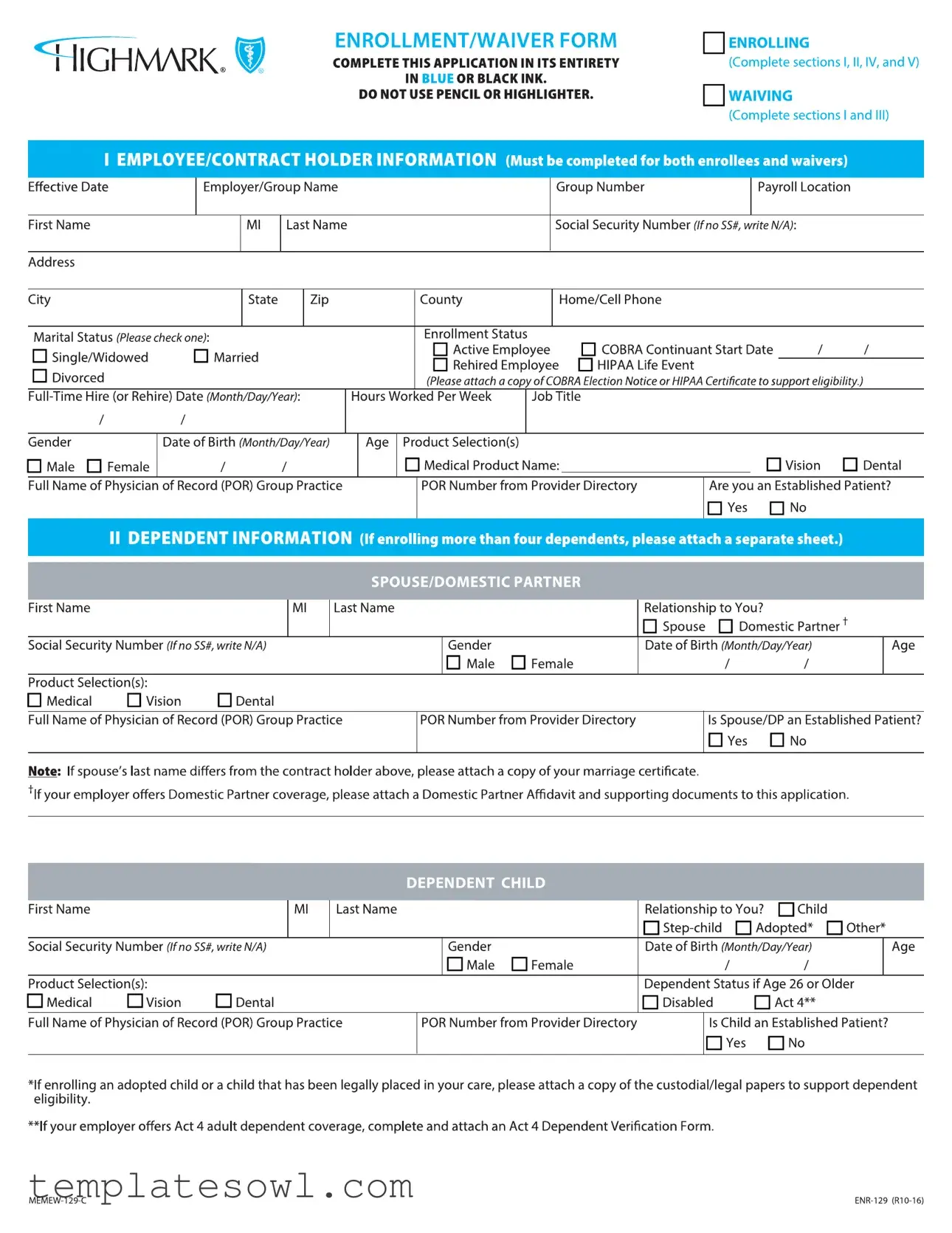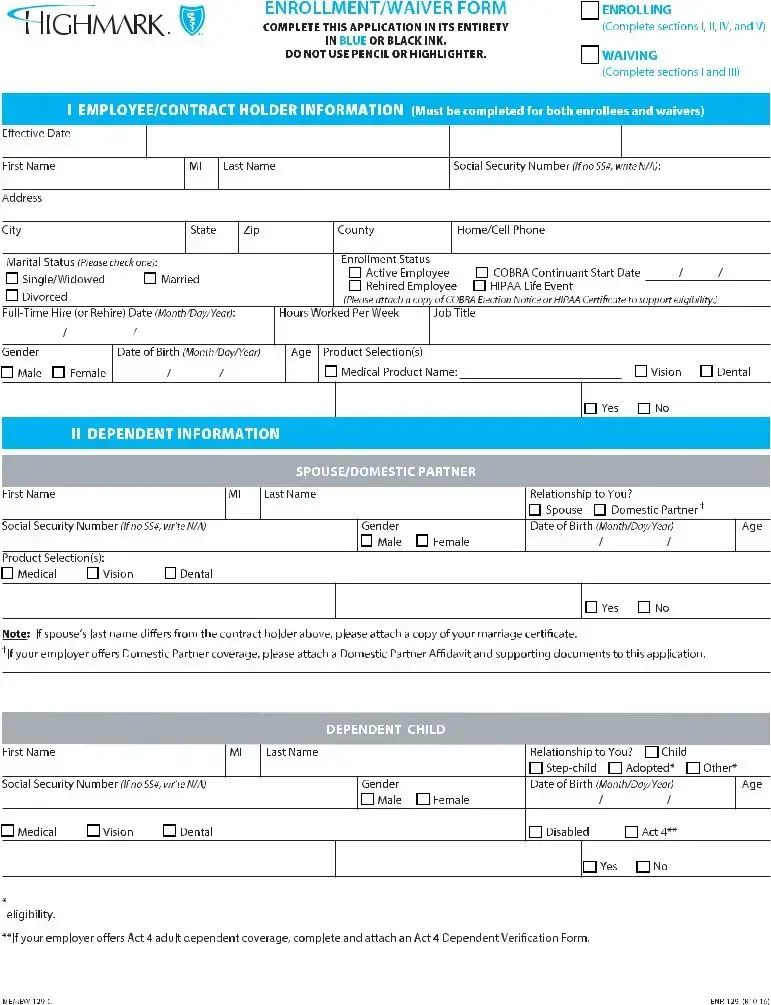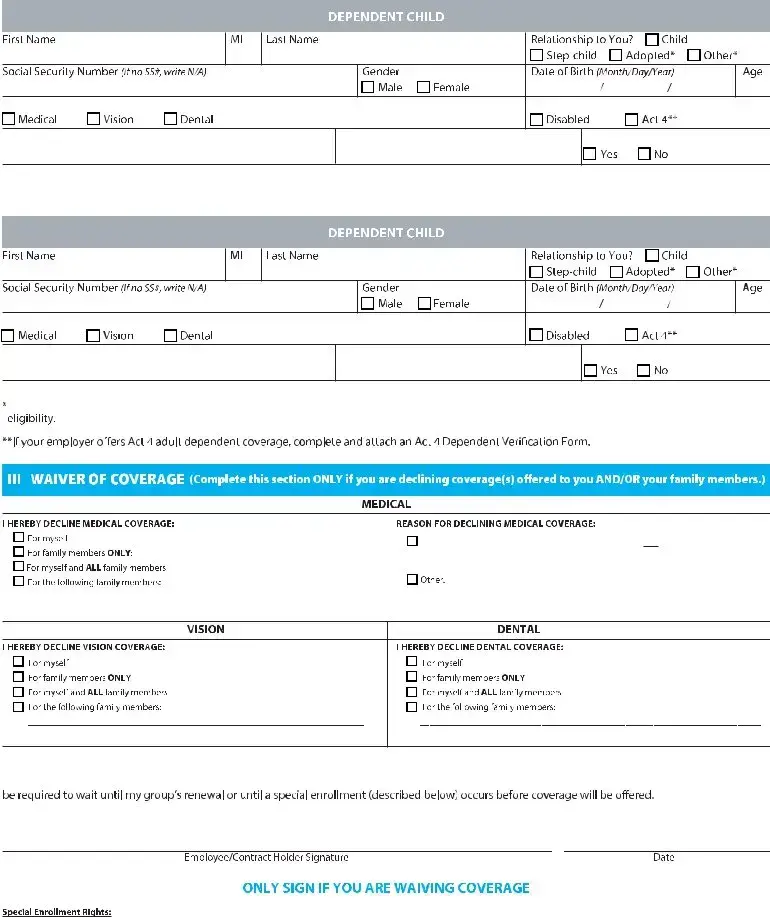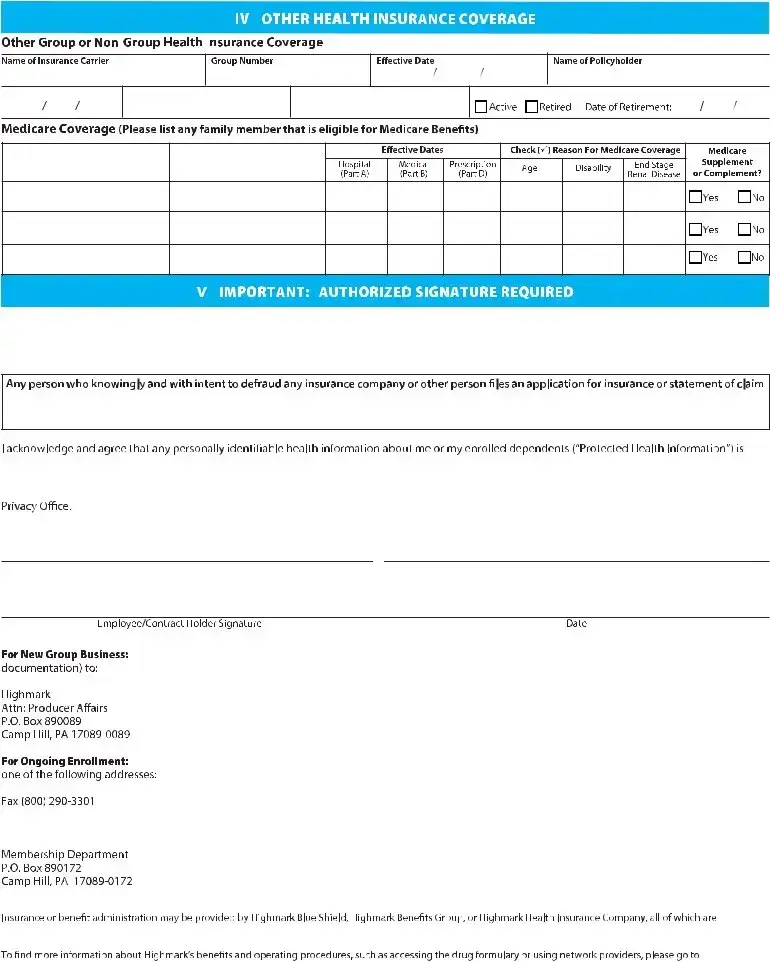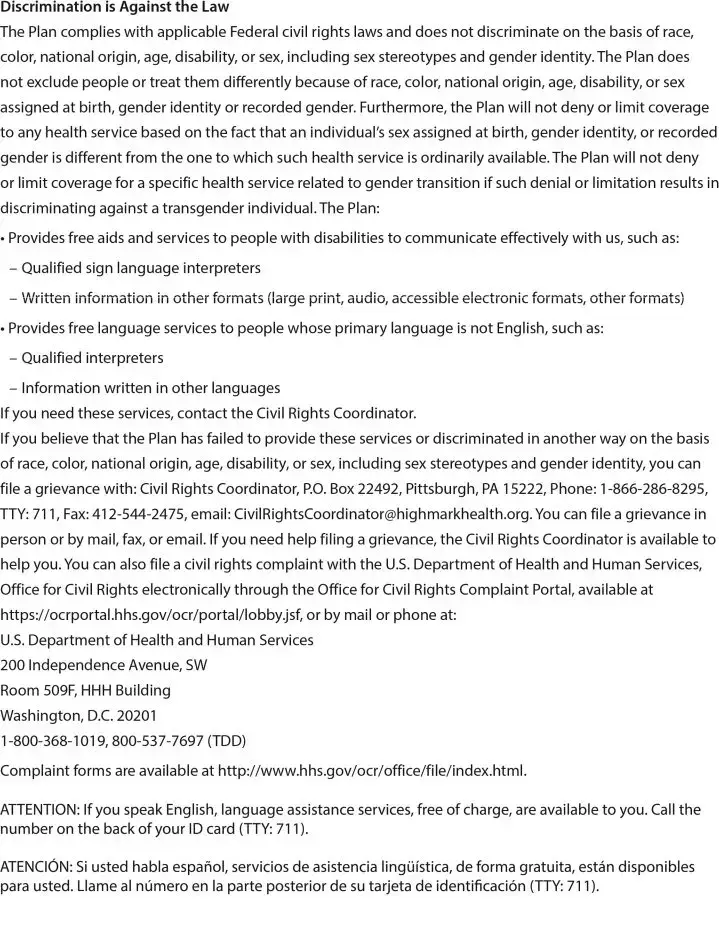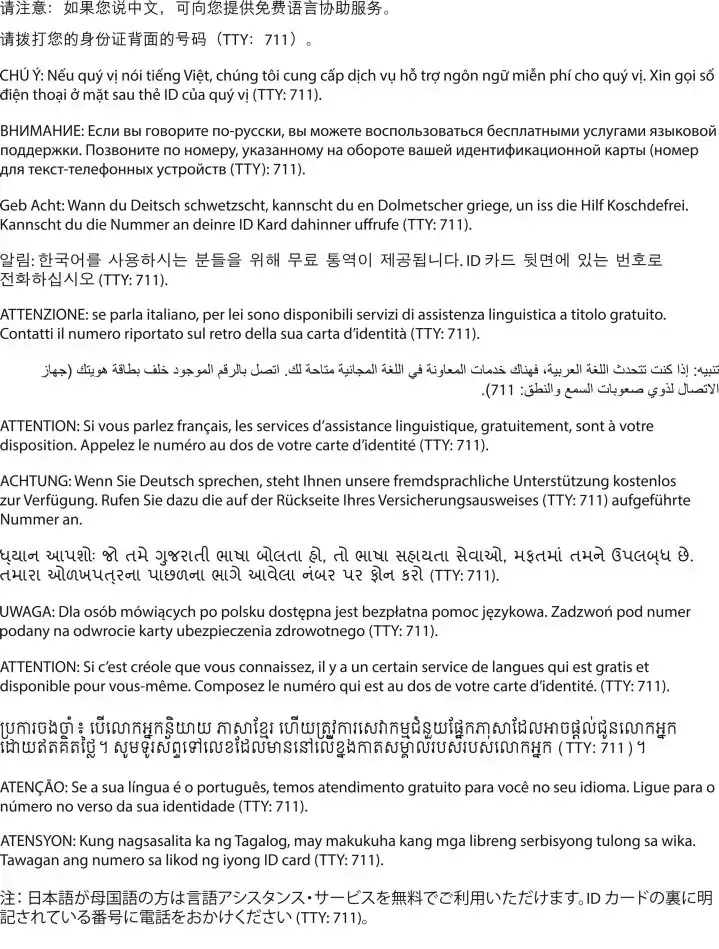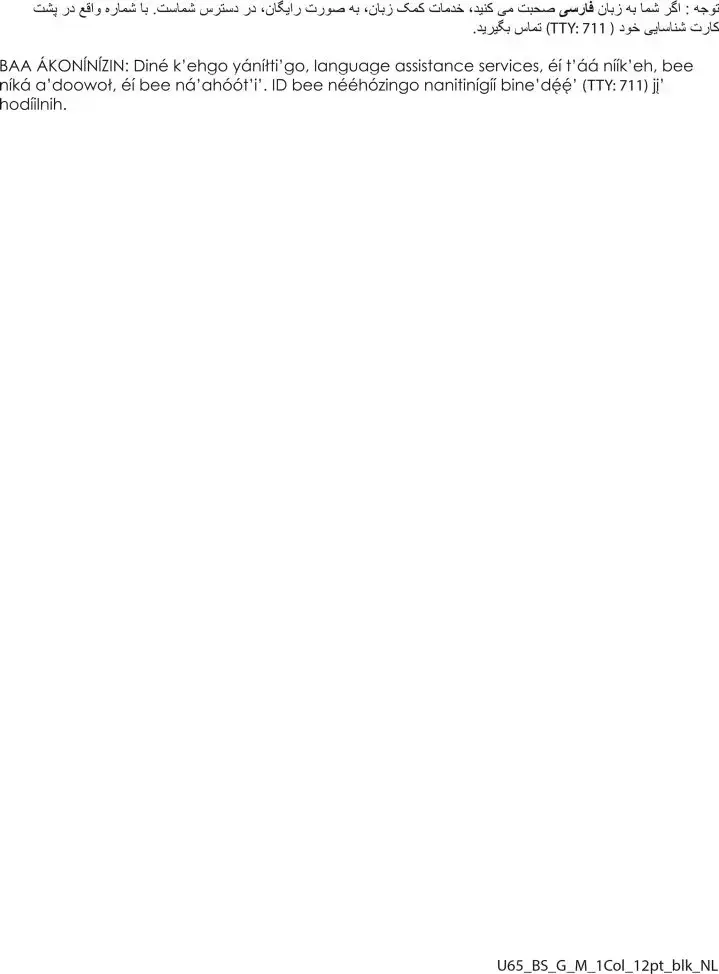What is the purpose of the Highmark Enrollment form?
The Highmark Enrollment form is designed for employees to enroll in or waive group health insurance coverage provided by their employer. It allows individuals to indicate their health plan preferences and to list their eligible dependents, ensuring everyone who is eligible for coverage can be included or opted out as needed.
How do I fill out the section for covered dependents?
In the covered dependents section, provide the first name, middle initial, last name, social security number, birthdate, sex, height, and weight of each dependent. If any dependent is over age 26, be sure to indicate their medical status. The form requires you to specify the relationship of each dependent to the primary subscriber. If applicable, please note if the dependent is a domestic partner or falls under another specified category.
What should I do if I am declining coverage?
If you choose to decline coverage, instruct that section clearly on the form. You can decline for yourself or your dependents. You’ll need to provide a reason for declining, such as being insured under another plan. It’s important to remember that declining coverage doesn’t mean you can't enroll later; you usually have a specified window to request coverage again if certain conditions apply.
What are qualifying events for enrollment?
Qualifying events include loss of other health coverage, marriage, birth, adoption, or placement for adoption. If you or your dependents experience these changes, you may request enrollment within a specific time frame—generally 30 days after the event. This allows you to add coverage without having to wait for the normal enrollment period.
Is there any medical information I need to provide?
Yes, the form includes a section where you disclose specific medical conditions and treatments for you and your dependents. This information is vital, as it helps the insurance company assess your coverage needs without affecting eligibility. Only include current and relevant medical conditions; avoid providing any genetic information.
How do I ensure my dependents are covered?
To ensure your dependents are covered, you must formally list them on the enrollment form. Each dependent’s information should be complete and accurate. If you fail to include them on the form, they will not receive coverage. It's also essential for both you and your employer to sign the form to validate the enrollment.
What happens if I don’t submit the form on time?
If you do not submit the Enrollment/Waiver form by the due date, you may miss the chance to enroll in coverage for the year. Typically, you will need to wait until the next open enrollment period or to experience a qualifying event to apply for coverage again. Timely submission is crucial to secure health benefits for yourself and your dependents.
